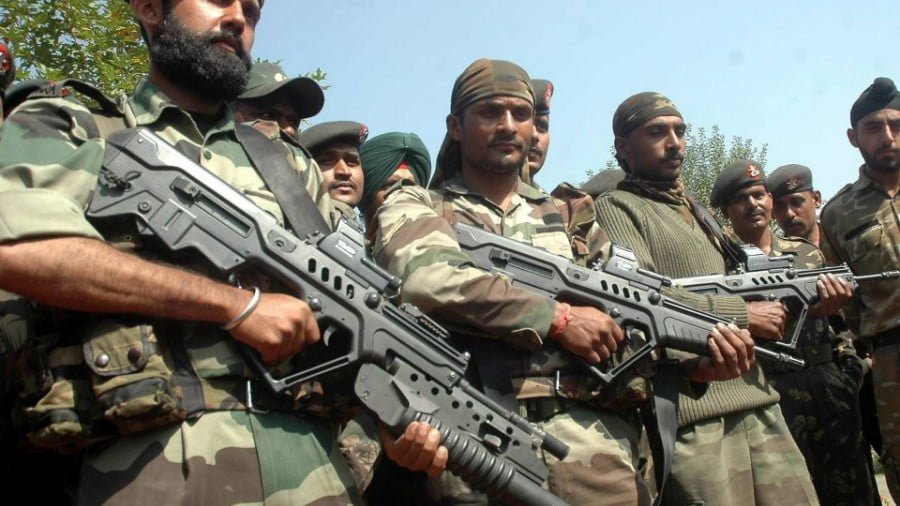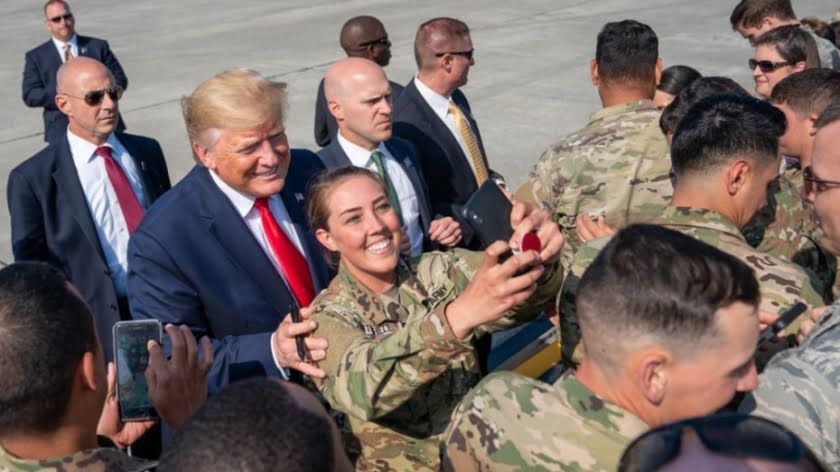Indian Army Says Its Equipment is Obsolete and Not Ready for War
In its direst warning to India’s Parliament yet, the Indian Army’s top brass stated that deep budgetary cuts have severely eroded its capabilities to fight a war.
“The budget of 2018-19 has dashed our hopes and most of what has been achieved has actually received a little setback,” Vice-Chief of Army Staff, Lieutenant General Sarath Chand, told Parliament’s standing committee on defense.
His views have been published in the 42nd report of the standing committee, ironically headed by a Member of Parliament from the ruling Bharatiya Janta Party (BJP) and an army veteran. Major General B. C. Khanduri, who retired from the army more than a decade ago, is a former minister and the Chief Minister of the state of Uttarakhand from the BJP. This report is the most strident criticism of Prime Minister Narendra Modi’s security polices and comes at a time when India faces dual challenges from China and Pakistan. The report was released on March 14.
The report focusses on the ‘capital budget’, which is meant for new acquisitions and the modernization of the Indian military. All three services – the Army, Navy and Air Force – present their cases to the Standing Committee twice a year, before Parliament approves the demand for grants. While the Standing Committee’s work is only recommendatory in nature, it is the only connection the military has to present its case to Parliament.
Shocking deficit
While the Indian Army has stated on record that 68% of its war fighting equipment is obsolete, the report has an even more disturbing fact. “Every year the military has to allocate a large part of its capital budget to pay for old and ongoing projects. This is known as the ‘Committed Liability.’ The actual amount left for new purchases is about 10% to 12%. But this year we have noticed that the Indian Army is actually facing a deficit,” a member of the committee told Asia Times on condition of anonymity. The budget, which was presented by Finance Minister Arun Jaitley on Feb. 1, has allocated less than even the ‘Committed Liability’ for past projects. “This is shocking,” the member said.
Former military chiefs agree that this has never happened before. “We have always had shortages in the capital budget. But this time, we noticed that the capital budget is actually short by Rs80 billion,” a senior Indian Army official familiar with the issue told Asia Times. “This means, that not only do we not have money to pay for new projects, we don’t even have money to pay for the ongoing ones.”
Lieutenant General Chand told the Committee that the “Allocation of Rs213.38 billion for modernization is insufficient even to cater for committed payments of Rs290.33 billion for 125 on-going schemes, emergency procurements…”
Interestingly, this budgetary deficit comes at a time when political rhetoric over the Modi government’s security policies are at their highest. The much-publicized “surgical strikes” by the Indian Army’s Special Forces in September 2016 and the 78-day stand-off with China at Doklam last year raised expectations. Frequent stories leaked to the media that the Indian Army made emergency purchases to address critical shortages was an attempt to paint the picture of an efficient government.
In fact, the government also actively aided books and films in an attempt to establish that its strategy against its adversaries was working. However, the standing committee’s report is a stark reminder of the actual state of India’s military.
Stalled acquisitions
For years, India’s military has struggled with a severe cash crunch to address modernization. “We need to first address our current hollowness in depleting war wastage reserves, ammunition shortages,” Lieutenant General D. S. Hooda, who has retired as the Northern Army Commander, told Asia Times. As an army commander he oversaw the borders with Pakistan and China, as well as the conflict-ridden state of Jammu and Kashmir.
Insiders say the “hollowness” is so deep that the Indian Army barely has reserves to fight a war for more than one week. In 2012, the then Chief of Army Staff, General V. K. Singh, wrote a Top Secret letter to Prime Minister Manmohan Singh, pointing out that the Indian Army could not fight a war beyond three days. Things are much worse now, India’s top generals insist.
“Every year we look at our most critical needs and agree to push for at least five to six big ticket projects, in the hope that the government will give us money,” a former Army Vice-Chief told Asia Times.
The top five projects, listed for nearly a decade by successive Army leaderships, are yet to take off.
Artillery
The first is the ambitious artillery modernization program, which has been stalled since the 1980s. There were essentially three projects, involving 155mm howitzers of 52″ and 32″ calibers. Some of these were supposed to be self-propelled, some towed and some a mix of both. India shortlisted an Israeli and a French firm for the towed 155mm guns a few years ago. However, these are still pending clearance.
In desperation, the Indian Army started hoping to quickly procure the 39″ caliber US M777 howitzer. “We had plans to buy 145 of them, but the barrel burst during trials. The American Chinook helicopters can easily lift them, which we are also procuring. So we were very positive on this. We suspect the ammunition was faulty, which was Indian. But the inquiry is yet to figure that out. So the project is stalled,” a senior serving artillery officer said.
The Ordnance Factory Board tried to come up with an indigenous version, based on a transfer of technology (TOT) from the then Swedish arms firm Bofors. The Bofors guns were brought in the 1980s, but allegations of kickbacks stopped any further purchases and the contracted TOT was in limbo. “That was revived, with the current owners, BAE systems, but we are yet to see much headway.”
Infantry
The second stalled project is the modernization of the infantry. The army short-listed two projects. Assault rifles for its soldiers and anti-tank guided missiles (ATGM). “The Israeli Spike missile and the US Javelin were short listed,” a senior officer revealed. The Javelin was double the price of the Spike and therefore abandoned. But a contract was signed to produce the Spike ATGMs between the Israeli manufacturers and Bharat Dynamics Limited (BDL), a government of India undertaking.
“But the cost of acquiring land to set up a factory to re-assemble missiles that will arrive in a semi-knock-down condition has now made it more expensive than the Javelin,” a senior defense ministry official said. Ironically, since this won’t be manufactured in India, this defeats the prime minister’s ‘Make in India’ plans. While the project was frozen, visiting Israeli Prime Minister Benjamin Netanyahu indicated it was being renegotiated.
As for assault rifles, the Indian Army continues to use an outdated weapon, designed in the early 1980s. “This has gone through various ups and downs and in desperation, the army suggested a dual caliber weapon. A 7.62 mm weapon for war, with an inter-changeable barrel to a 5.56 mm caliber. This was the stupidest idea we could come up with and it was shot down,” the officer said. And the Defence Research and Development Organisation (DRDO) has promised us the moon, but none of their prototypes can be used,” a former infantry general revealed.
Air defense
There were at least three projects to urgently modernize air defense and the army was desperate to get at least enough budget for even one. “We came up with a plan to have a joint project with the Israelis, a private Indian company and the government undertaking Bharat Dynamics Limited, for Medium-Range Surface-to-Air-Missiles (MR-SAMS),” a senior army general said. So plans were made to create a new facility and that immediately upped the cost by Rs10 million per missile. “So now we are not sure if we will get this either.”
Armored warfare
Bogged down with vintage Russian T-72s and BMP-1 and 2 combat vehicles, the Indian Army is desperate for modernization. Armored warfare against Pakistan has always been a key factor of India’s military doctrine. “Plans were drawn up to have at least 1,000 of the oldest T-72s and 1,000 of the BMPs upgraded,” a former Army Chief said. This meant adding night vision capabilities, a new fire control system and better engines. While the Israelis came up with an offer, “we needed the Russians, who were the original manufacturers.” But like the other projects, this is also waiting for budgetary clearances.
Helicopters
Deployed on the world’s highest battlefield, the Siachen Glacier, helicopters are the lifeline for the Indian Army on its borders with Pakistan and China. While plans were to get the US Apache attack helicopters, there was urgency is getting the transport helicopters first. The Indian Army uses vintage French helicopters that were adapted to suits Indian conditions. “But we needed a twin engine machine, so we zeroed in on the Russian Kamov,” an army aviation officer said. Allegations of kickbacks against a serving brigadier stalled the process. When it was revived, there were plans for a joint venture involving the Russians, an Indian private firm and DRDO. “Nothing has moved and the private firm has now been replaced by the government undertaking Hindustan Aeronautics Limited,” the officer said.
“The first thing is that the government and the military must be on the same page. The government continues to insist that there is no problem, while the military is saying there are serious shortfalls, not only in weapons and equipment, but also in infrastructure development,” Lieutenant General Hooda said. However, with the Indian Army staring at a major deficit, chances are that it will continue to be stuck with equipment from World War II.







